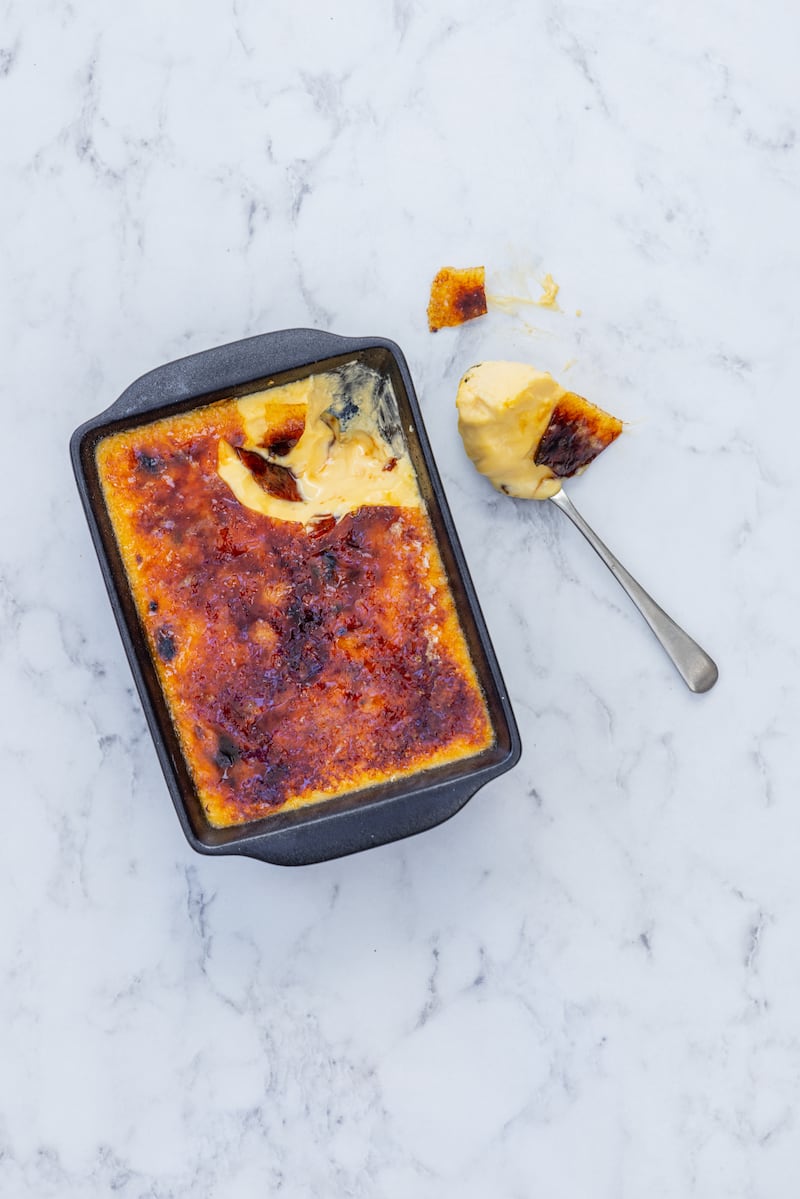With Valentine’s Day approaching, I felt it an appropriate time to turn our attention to something sweet. On top of that, the big day is midweek, so these dishes are designed to be made in advance, ready to whip out for a sweet surprise after dinner.
Of course, Valentine’s Day is just a bit of marketing jargon, isn’t it? As I tell my wife, if you have to wait for a one-off day in February to feel the love, then you need to consider finding a better partner (if you’re reading this Gráinne, don’t worry, I still have the flowers ordered).
Having said that, V Day is one of the big days in the restaurant calendar, with some of the more eclectic guests of the year turning up. A room full of tables for two usually signals pain for the kitchen, with no larger groups to stem the flow of orders on the board. I still have nightmares about one particular restaurant I worked in. The Valentine’s menu consisted of eight courses, with each course having one dish for her and another for him. Fantastic for the guests, chaos for the kitchen.
It was also a fascinating time for people watching couples at various stages of life. Some were going through the motions, some were full of enthusiasm on a first Valentine’s date and some were extremely uncomfortable business dinner guests meeting up without registering the date, until they sat down. And how could I forget the break-up that happened after the first of six courses? The front of house team nervously asked the remaining member of the former couple how they would like to proceed. “Sure I’ll keep going myself, may as well get something from the evening.”
READ MORE
The first recipe is a handy all-in-one style dish that looks impressive with little effort. Basque cheesecake has really come into fashion in recent years. Looking up its history in preparation for this column, I was surprised to find it is only a recent invention, first appearing in the early 1990s at the famous La Viña restaurant in San Sebastián.
If you’re not a confident cook, this is the dessert for you. Long story short, you basically mix everything together and burn it in the oven. Perhaps this was why it took a while to catch on from its humble beginnings in the north of Spain. The magic is when it is sliced into wedges, the blackened exterior giving way to a striking pale interior, filled with sweetened cream cheese, vanilla and set with eggs. The burnt exterior crucially adds the bitter edge to cut through the richness of the cake. With some tart blueberry compote added, it’s a winner. In the summer, feel free to substitute seasonal raspberries and strawberries.

Crème brûlée is a classy selection. Simple, almost rough in appearance, but over delivering with flavour, luxury, texture and comfort. If you can stretch the budget, buy the vanilla pods. They make the world of difference for something so simple. Unlike the cheesecake, crème brûlée is referenced in French gastronomy writing as far back as the 1600s. It is a sweetened cream fit for royalty. The key to attaining the caramelised topping at home is to make a larger, deeper custard. Once cooked and chilled, you can dust it with sugar and place it under a very hot grill. The sugar will caramelise before the cream melts underneath due to the depth and cold temperature from the fridge.
However you decide to spend the evening, rest assured that feeding people delicious food is a true act of love.
Recipe: Basque cheesecake with blueberry compote
Recipe: Crème brûlée
















